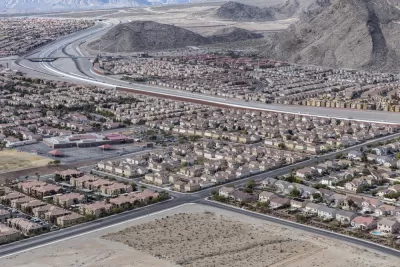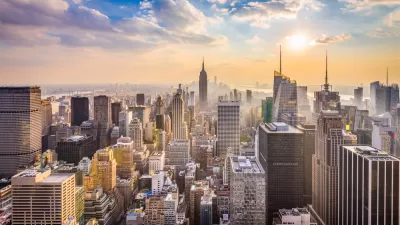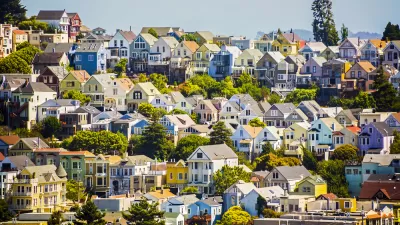In search of space and affordability, American families are increasingly moving to suburbs and exurbs.

Suburban sprawl is nothing new to U.S. cities, but, as we have noted repeatedly over the last two years, the pandemic has accelerated the dispersal of urban households to suburbs and exurbs and reduced Americans' appetite for public transit. But high rents in urban cores have been driving the trend since well before the pandemic. And, as Patrick Sisson writes, "with growth has come a familiar set of challenges, including traffic, environmental damage and city services that struggle to reach a spread-out population."
To meet rising demand for new homes, developers are building on undeveloped suburban fringes rather than urban infill properties with more difficult permitting processes. "Indeed, the ascendance of sprawl is a source of dismay for historic foes of this land- and energy-intensive development pattern, which bakes-in car-centric lifestyles and strains resources like water."
While some cities are enacting zoning reforms and pro-density policies to increase affordability and fight climate change, Sisson says "those factors are not nearly enough to offset the magnetic pull of cheap land." While local leaders embrace walkability and density as goals, many households are still forced to seek affordability outside central cities. Meanwhile, build-to-rent developers are capitalizing on the need from people who can't afford homeownership but want the space and amenities offered by single-family homes.
FULL STORY: How the Pandemic Supercharged Sprawl

Alabama: Trump Terminates Settlements for Black Communities Harmed By Raw Sewage
Trump deemed the landmark civil rights agreement “illegal DEI and environmental justice policy.”

Planetizen Federal Action Tracker
A weekly monitor of how Trump’s orders and actions are impacting planners and planning in America.

Why Should We Subsidize Public Transportation?
Many public transit agencies face financial stress due to rising costs, declining fare revenue, and declining subsidies. Transit advocates must provide a strong business case for increasing public transit funding.

Understanding Road Diets
An explainer from Momentum highlights the advantages of reducing vehicle lanes in favor of more bike, transit, and pedestrian infrastructure.

New California Law Regulates Warehouse Pollution
A new law tightens building and emissions regulations for large distribution warehouses to mitigate air pollution and traffic in surrounding communities.

Phoenix Announces Opening Date for Light Rail Extension
The South Central extension will connect South Phoenix to downtown and other major hubs starting on June 7.
Urban Design for Planners 1: Software Tools
This six-course series explores essential urban design concepts using open source software and equips planners with the tools they need to participate fully in the urban design process.
Planning for Universal Design
Learn the tools for implementing Universal Design in planning regulations.
Caltrans
Smith Gee Studio
Institute for Housing and Urban Development Studies (IHS)
City of Grandview
Harvard GSD Executive Education
Toledo-Lucas County Plan Commissions
Salt Lake City
NYU Wagner Graduate School of Public Service





























